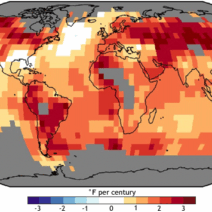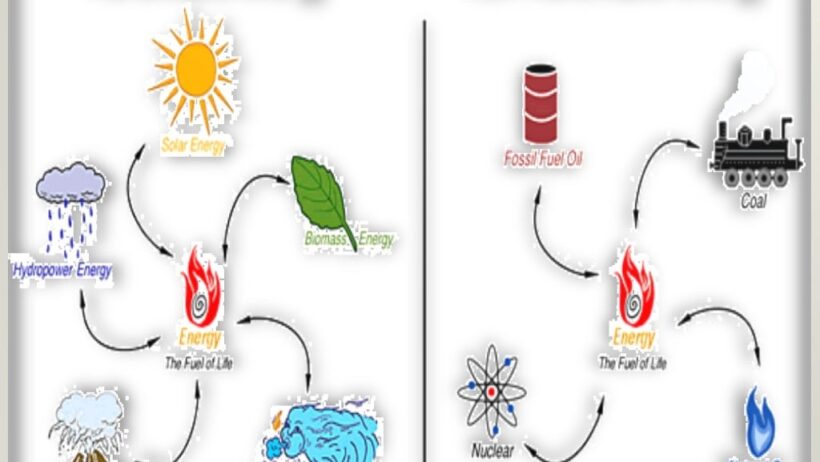In our contemporary society, minerals and energy resources underpin the foundation of technological advancement, infrastructure development, and economic vitality. However, the relentless consumption of these finite resources has ignited a clarion call for conservation and sustainability. As stewards of Earth’s wealth, it is imperative that we adopt systematic practices to conserve these critical assets.
Conservation enacts a twofold benefit: it preserves essential natural resources for future generations and mitigates environmental degradation. This discourse examines various strategies for conserving minerals and energy resources, elucidating the inherent value of sustainable practices.
Understanding Minerals and Their Importance
Minerals play a pivotal role in modern manufacturing and infrastructure. These naturally occurring, inorganic substances are categorized into two main groups: metallic and non-metallic minerals. Metallic minerals, such as copper, iron, and aluminum, are vital for construction, electrical wiring, and machinery. Non-metallic minerals, including salt, limestone, and gypsum, are indispensable in construction, agriculture, and various industries.
The extraction and processing of minerals have significant environmental ramifications. Mining operations lead to deforestation, habitat destruction, and pollution. By employing strategies of conservation and efficient usage, we can minimize these effects while ensuring that minerals continue to fulfill societal needs.
Strategies for Mineral Conservation
1. Recycling and Reuse: Recycling practices can substantially mitigate the demand for new mineral extraction. For instance, recycling aluminum saves up to 95% of the energy required to produce new aluminum from ore. Creating systems that facilitate the recycling of metals and other materials can alleviate the strain on natural reserves.
2. Adopting Sustainable Mining Practices: Implementing eco-friendly mining techniques can reduce environmental impacts. This includes using less intrusive extraction methods, minimizing water usage, and rehabilitating mining sites post-extraction to restore biodiversity.
3. Innovative Material Alternatives: Developing substitutes for rare or scarce minerals can diminish dependency. For instance, the creation of synthetic materials that replicate the properties of rare minerals can foster sustainability while ensuring the continuity of industries reliant on these resources.
4. Public Awareness and Education: Fostering a culture of conservation through education empowers individuals to make informed choices regarding mineral usage. Infusing sustainability into community programs can generate widespread awareness about the impact of mineral consumption.
5. Efficiency in Production Processes: Industries should adopt advanced technologies that promote energy-efficient production methods. Reducing waste during the manufacturing processes conserves minerals and energy, further extending the lifespan of these finite resources.
The Role of Energy Resources in Sustainable Development
Energy resources—comprising fossil fuels, nuclear power, and renewable energy—are indispensable for economic growth. However, fossil fuel extraction and combustion foster climate change, contributing to global warming and environmental turmoil. Transitioning towards renewable energy sources is essential for protecting both the planet and human welfare.
Strategies for Energy Conservation
1. Embracing Renewable Energy: Solar, wind, hydroelectric, and geothermal energy are sustainable alternatives that can significantly reduce reliance on fossil fuels. By investing in and adopting these technologies, communities can reduce greenhouse gas emissions while ensuring an uninterrupted energy supply.
2. Energy Efficiency in Buildings: Enhancements in building design can lead to substantial energy conservation. Utilizing energy-efficient appliances, proper insulation, and smart energy management systems can diminish energy consumption in residential and commercial properties.
3. Encouraging Public Transportation: The shift from personal vehicles to public transit reduces energy consumption substantially. Governments can incentivize the use of public transportation through subsidies, improved service, and infrastructure development, thus lessening the carbon footprint associated with individual car use.
4. Behavioral Change: Individuals’ habits play a crucial role in energy consumption. Advocating for simple measures—such as turning off lights when leaving a room, using energy-efficient appliances, and reducing water heating—can collectively yield significant energy savings.
Exploring the Future: Innovations in Conservation
The advent of technology has opened new avenues for conservation. Innovations such as smart grids enable real-time energy management, optimizing energy distribution and consumption. Additionally, advancements in artificial intelligence can aid in predicting energy needs and enhancing efficiency in mineral extraction processes.
Furthermore, collaborations between governments, businesses, and non-profit organizations can foster a holistic approach to conservation. These partnerships can drive research, funding, and public policy reforms that prioritize sustainable practices.
Conclusion: The Path Forward
As custodians of this planet, it is our responsibility to employ effective strategies for mineral and energy conservation. By recycling materials, adopting sustainable methods, transitioning to renewable energy, and fostering public awareness, we can protect Earth’s wealth for future generations. The paradigms of consumption must shift toward sustainability, paving the way for a balanced coexistence with nature.
Through collective efforts and a commitment to conservation, we can ensure a robust ecosystem that supports the myriad of life on Earth while respecting and preserving its invaluable resources.






